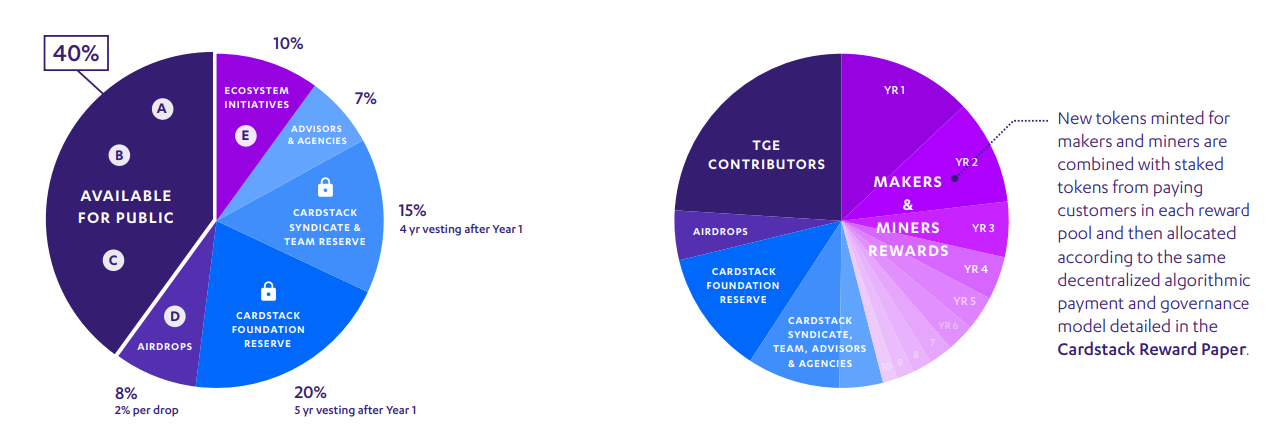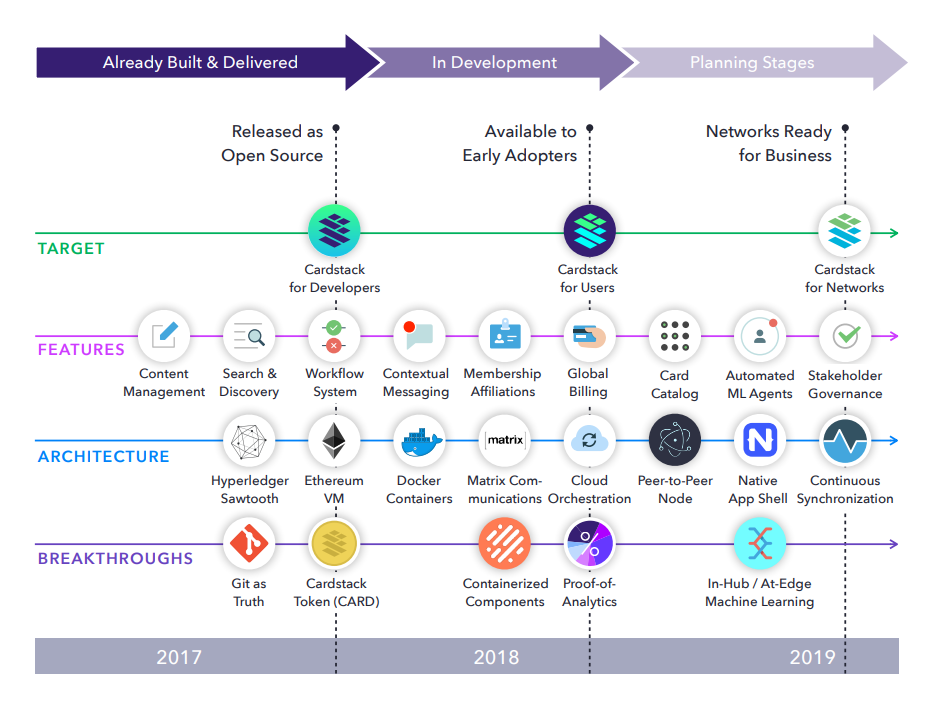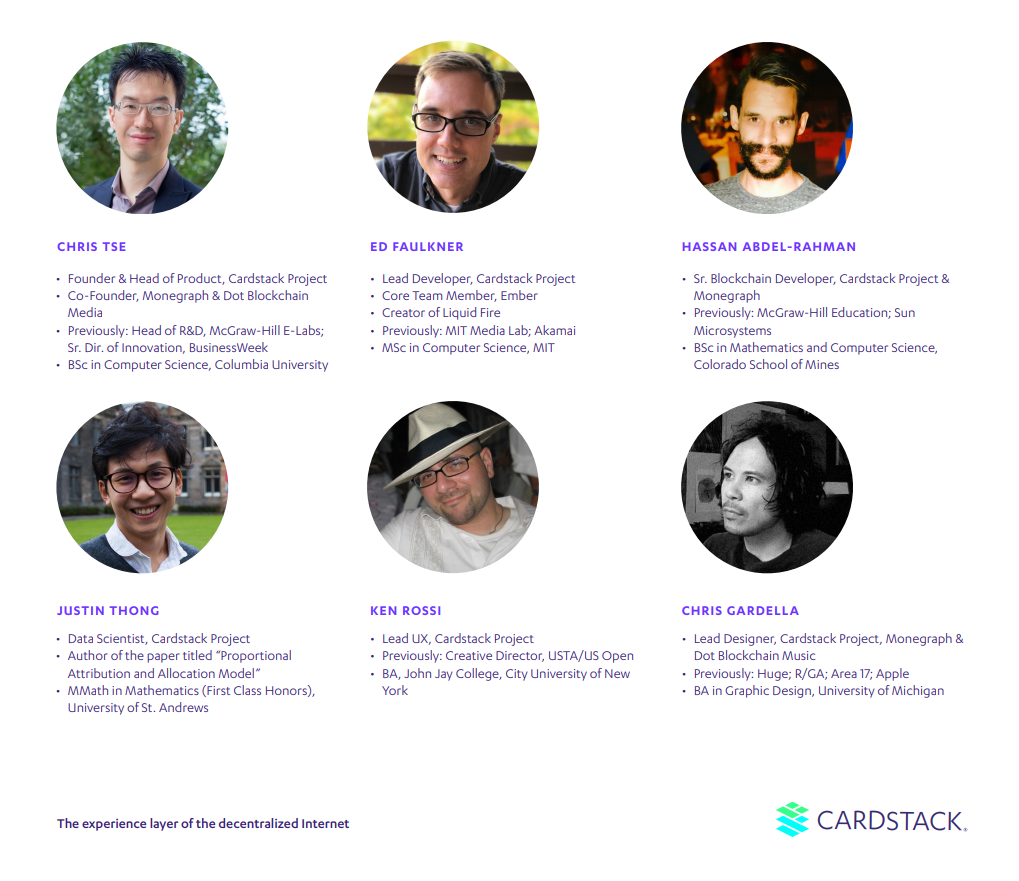What is Cardstack?
In other words, making the leap for block chains on every floor of the software pile, Cardstack adds a revolutionary experience that makes block-chain technology workable and measurable; creating a centralized software ecosystem that can compete with digital platforms. Centralized technology pushes us into silos and captures the value we create. Early centric technology, such as bitcoin, promises chaining blocks, but also benefits bad people.
The Cardstack decentralization approach allows dominant users to act as their center; so that interactions with applications and services running on different network topologies flow through user-controlled software stacks.
The concepts that make up this field problem are mainly:
The App Store Period turns the software feature into an independent, original application; These apps generally do not communicate with each other and others want to choose from some overlapping features to shape the user's workflow.
While the software is floating in the cloud, the user has to manage multiple subscriptions to the software product (SaaS) as an Internet-based service and choose the right plan to optimize the cost for all the required features.
The emergence of block chains and decentralized applications (dApps) has made it harder for users to obtain and manage service symbols for every function that makes up the software stack.
The main card solutions in this regard are:
- Cardstack creates a new layer of experience that helps users manage their interactions in Apps (d) while maintaining collective market acceptance of epistemic centralized technology in open ecosystems.
- In short, the new orchestration approach should put users at the center and let them act like their own center; so that interactions with applications and services occur through user-controlled stack software.
- In addition, the arrangements required to coat a decentralized Internet experience can be intuitively done by suggesting the flow of subsequent movements by chaining each card by changing every state of the application into a visual setting of the relevant information.
- The process of centralizing the software ecosystem behind a deck of cards experiencing a centralized Internet experience can be done piecemeal by allowing changes to common cloud services when ready to change the block chain.

This discovery is made possible by an associative design paradigm that Cardstack is a card unit encapsulated, embedded, embedded, chained, triggered, diversified, incorporated, approved, revoked, diversified, cloned, approved, permanently revoked or recorded. In a decentralized world, your data must be networked or sovereign as you wish.
Developers can use Cardstack Framework, a comprehensive SDK to create powerful card-based blockage applications. Build anything by using modular stories and discovery containers. Easily create custom workflows using Cardstack Hub, which organizes data transfers and values across multiple chain and cloud blocks. Use prebuilt functions like searchable index, real-time notifications, uniform user permissions, flexible container distribution, and more. Everything is upgraded and 100% open source.
This ecosystem is governed by smart contracts supported by Cardstack Token (CARD), an ERC20 indicator based on Ethereal. CARDS are not just old cryptography: Designed specifically to create sustainable markets where open source developers are highly valued, allowing users to combine and combine the perfect blend of software services to suit their needs.
When a user uses CARD, he creates a smart contract between the user and the selected app before entering the prize pool. Based on anonymous usage data tracked by smart contracts, collected icons are then distributed regularly to content creators and app contributors according to the algorithmic payment model and dynamic governance in the hands of the community.
Like other crypto currencies, CARD users can become miners to verify transactions and earn wages. However, unlike Bitcoin, which forces miners to solve math problems that are not working, Cardstack's analysis analysts make the system fair and flexible by helping to calculate the reward function that pays anything necessary to generate unwanted mail. The results of analytical miners compete in a ranking scheme called analytical evidence, so the award algorithm is never under the control of one party.
ICO DETAILS

Smart Contracts, Token Cards and Tokens Software and Services
The smart contract in the Cardstack ecosystem is enhanced through registry abstraction and this transfer transfers to the latest version. Identity Card Tokens are written as CST and are also referred to as "cards". A business card token is a tradable token based on the Ethereal ERC-20 network standard. The Software and Service Token are non-transferable entries in each application contract.
Allocation of Token

The majority of business card tokens will be distributed among end users, ecosystem makers and miners. Also, some of these tokens will be available for Foundation and Syndicate which will be completed for more than 5 years. The Cardstack Foundation in the Token Generation Event will generate 10,000,000,000 CST. During Year 1 to pre-allocation, fundraising from the crowd, and airdrop will distribute 30% of the generated tokens. Peer exchange evidence will be available at the end of fundraising from the crowd.
Token Function
- Application Retainer
- Custodian Fee
- Team and Project Registration
- Spying on an Opinion
- Metering Usage
- US Dollar Peg
- Generate Creators and Miners
- Doing Analytics
- Inflation
- Availability of Token for Users
Roadmap

Team

The final verdict
With such innovative centric and centric efforts, Cardstack has reached a sweet spot to decentralize the prevailing payment system in today's world. Overall, the big changes that will appear will certainly make a lot of eyes and this will definitely be a challenge for any digital payment mode.
For more information:
website: https://cardstack.com/
White paper: https://cardstack.attach.io/HJaZkzgn~
Twitter: https://twitter.com/cardstack
Telegram: https://telegram.me/cardstack
Ann Thread BTT: https://bitcointalk.org/index.php?topic=2768237.0
Author: enno.netral
Bitcointalk Profile: https: //bitcointalk.org/index.php? Action = profile; u = 1785586
Eth: 0xbDF56fAC1d4b6591178a8bc94A53B01F1fec2861
Tidak ada komentar:
Posting Komentar